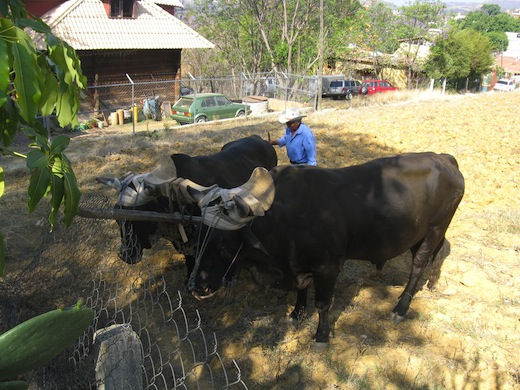
On Jan. 1, 1994, the North American Free Trade Agreement, NAFTA, came into force. On that day, 3,000 armed indigenous people from Mexico’s southernmost state, Chiapas, seized San Cristobal de las Casas and other towns, and fought a brief conflict with the Mexican Army which left at least 145 dead.
The Zapatista Army of National Liberation (EZLN) rebelled because they saw NAFTA as a “death sentence” for indigenous farming communities, who could not compete with imports of cheap grain from the U.S. and Canada. Mass national protests prevented President Carlos Salinas de Gortari from crushing these Zapatistas. But important sectors of international monopoly capital called for them to be exterminated so that transnational corporations could get their hands on the oil and other rich resources of southern Mexico.
NAFTA was negotiated among the United States, Canada and Mexico as a so-called free trade agreement whereby all three countries would phase out their protective tariffs and change their legal systems to make cross-border trade easier. U.S. and Canadian unions objected because they predicted it would result in the loss of manufacturing jobs as companies moved production to low-wage Mexico. Mexico’s chief negotiator, Trade Minister Jaime Serra Puche, predicted that while massive imports of U.S. and Canadian wheat, maize and other farm products would indeed drive millions of Mexican farmers off their land, this would create a source of cheap labor which would attract foreign manufacturers. Mexico would also be compensated by allowing sales of Mexican fruits and vegetables in U.S. markets, and by allowing Mexican truckers to operate within the United States. Mexico changed its laws accordingly, modifying Article 27 of its constitution which had forbidden the alienation of peasant communities’ farmland.
Now, 20 years on…
* The U.S. working class lost perhaps a million manufacturing jobs, net, and Canada saw similar results.
* Two million Mexican farmers were driven off the land by sharp drops in the prices they were able to get for their crops when U.S. taxpayer-subsidized grain flooded in.
* Insufficient foreign investment came in to employ the millions displaced from the Mexican countryside. It paid its workers so poorly that there was little contribution to the overall economy. Eventually, many plants moved to even lower-wage countries in Asia.
* Foreign corporations contributed as little as possible to communities in Mexico. Many have done huge damage to the environment. Fights between farmers and foreign mining corporations, over alienation of land and depletion and contamination of water sources, are ongoing.
* Export of vegetables and fruits from Mexico to the United States has been impeded by U.S. farm interests.
* Mexican businesses found they could not compete against U.S. transnational corporations, and many shut down. Hundreds of Walmart stores have replaced Mexican-owned retailers.
* Pushed off the land and out of their jobs, millions have had no choice but to leave Mexico to seek work, causing a huge leap in the number of undocumented immigrants from Mexico in the United States.
* When grain prices collapsed, some desperate Mexican farmers turned to cultivating marijuana. The unemployed became the target of recruitment by drug cartels and other criminal enterprises. The ensuing drug war killed tens of thousands.
* Mexican workers and farmers are still poor and getting poorer. The rich in all three countries have gotten richer.
Former Mexican Commerce Minister Serra Puche now lives in Santa Fe, New Mexico, where he runs a firm which advises foreign companies on how to invest in Mexico. Interviewed by La Jornada, Serra said criticisms of NAFTA are “just a little unfair”: The purpose of NAFTA, he said, was to increase cross-border trade and investment, not to end poverty. Mexican companies that could not compete with U.S. imports have only themselves to blame, he said. Nothing was said about workers and small farmers.
Throughout Latin America and the Caribbean, countries are building regional trade ties not subordinated to major transnational corporations, the IMF and World Bank or the will of Uncle Sam. These trade arrangements do not force the participating countries to take up policies of austerity, privatization and deregulation. Almost all are doing better than Mexico. Many Mexicans admire these results.
Mexico is so entangled with the United States economy that it would be very hard to disengage. Seventy-eight percent of Mexican exports now go to the United States, and 50 percent of imports come from the U.S. Twelve million people born in Mexico live in the United States, and the remittances which they send back amount to around $24 billion annually.
Much of Mexican labor is under the thumb of the dominant party, PRI. The head of the Petroleum Workers Union, Carlos Romero Deschamps, not only signed off on the “energy reform” seen by the left as an opening to the privatization of oil , but agreed to the replacement of members of his union by employees from foreign corporations.
A few unions, including the Mexican Electricians Union (SME) and the Mine and Metal Workers Union, have bucked the tide, but have been subjected to ferocious government union-busting efforts.
Nevertheless there are struggles everywhere in Mexico against the neoliberal policies imposed under NAFTA.
Photo: A farmer plows in Oaxaca, Mexico. OneWorld Nederland CC 2.0










